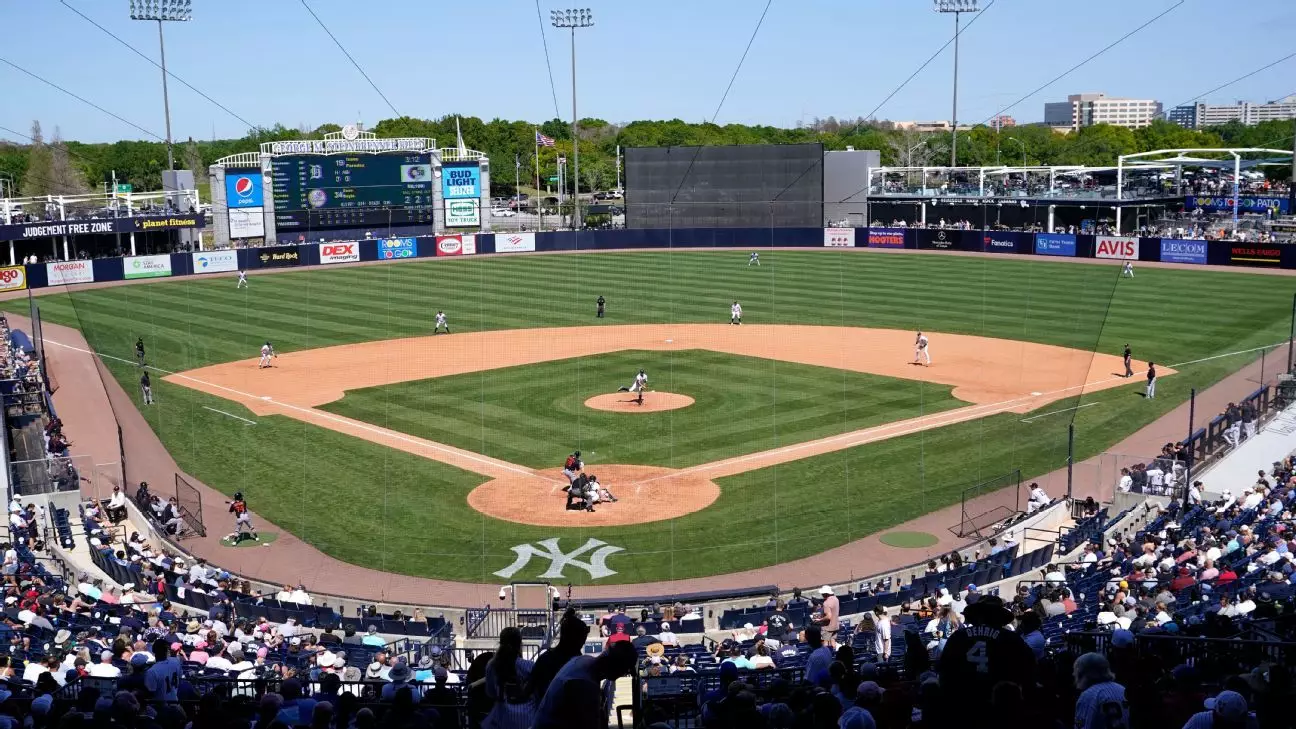In a surprising move that has left many fans and analysts speculating, the Tampa Bay Rays are set to play their home games for the 2025 season at Steinbrenner Field, the spring training facility for the New York Yankees. This decision comes in light of severe damage inflicted upon Tropicana Field by Hurricane Milton, rendering the Rays’ long-time home untenable for the near future. The complexities surrounding this situation reflect not just on the team’s logistical challenges, but also on the broader implications for Major League Baseball (MLB) in the Tampa Bay region.
Tropicana Field has been the Rays‘ base since their inception in 1998. However, the recent hurricane caused substantial destruction, particularly to the stadium’s fabric roof, leading to concerns about its structural integrity. A comprehensive evaluation by the city revealed repair costs could reach an estimated $55.7 million, a significant financial hurdle given the city’s earlier approvals of a $1.3 billion project to construct a new stadium by 2028.
The transition to Steinbrenner Field, which holds around 11,000 fans, poses unique challenges and opportunities. Principal owner Stuart Sternberg expressed optimism about the arrangement, indicating that it allows fans to continue enjoying high-caliber baseball despite the tumultuous circumstances surrounding winning baseball games at a small venue. “It is singularly the best opportunity for our fans,” stated Sternberg, hinting at the intimate fan experience this smaller venue can provide, despite its unconventional nature as a temporary home.
The logistic complexities of this arrangement cannot be overlooked. Steinbrenner Field is operated by one of the Rays‘ primary American League East rivals, the Yankees. For a team known for its fierce competition against the Yankees, sharing their spring training facility represents a significant departure from traditional rivalries. It exemplifies a spirit of cooperation prompted by the pressing circumstances of climate-related disaster recovery, suggesting that in dire times, baseball’s competitive nature can take a backseat to communal resilience.
The shift to Steinbrenner Field does not solely translate into a new playing environment; it will also prompt adjustments in fan engagement strategies. Co-president Brian Auld emphasized the team’s commitment to creating a “Rayful” atmosphere within Steinbrenner Field, suggesting that while they may be playing in a Yankees facility, efforts will be made to ensure it feels distinctly like a Rays home game.
However, there are inherent challenges too, especially regarding Florida’s unpredictable summer weather. Unlike the controlled conditions of Tropicana Field, where fans were shielded from inclement weather, the outdoor setting of Steinbrenner Field may lead to a differing fan experience during the Florida summer’s sweltering heat and frequent downpours.
The projected attendance figures provide an additional layer of complexity to the transition. The Rays averaged around 16,500 fans per game in 2024 — a considerable feat. Whether Steinbrenner Field can accommodate the loyalty and enthusiasm of Rays fans, given its smaller capacity, raises questions about both revenue and community support.
The financial ramifications of this unique arrangement cannot be understated. The Yankees will receive approximately $15 million from sources outside Tampa Bay to host the Rays, which includes funds related to insurance rather than revenue from ticket sales. This amount underscores the intricate financial dance at play as municipalities and franchises strive to fulfill obligations while navigating the wake of natural disasters.
Hal Steinbrenner, owner of the Yankees, indicated that the decision to assist the Rays underscores deep community ties. His perspective illustrates how sports can transcend rivalry, focusing instead on contributing to recovery and maintaining unity in the wake of climate-related catastrophe. “In times like these, rivalry and competition take a backseat to doing what’s right for our community,” Steinbrenner noted, highlighting the broader context of resilience and rebuilding.
As the Rays prepare for their 2025 season in an unfamiliar venue, the transition prompts deep reflection on the future of baseball in the Tampa Bay area. Will the communal spirit fostered through this collaboration help the Rays emerge from their tumultuous circumstances? Or will lingering uncertainties about Tropicana Field’s viability overshadow the excitement of playing in a new home? The answers to these questions will unfold as the season progresses.
While the Rays face a challenging yet adaptable season ahead, this unprecedented shift offers a glimpse into baseball’s potential to adapt and engage communities in times of uncertainty. As fans prepare to visit Steinbrenner Field, they don’t just bring their team spirit — they carry the hopes for healing and growth in a region still reeling from the impact of hurricane devastation.


Napsat komentář